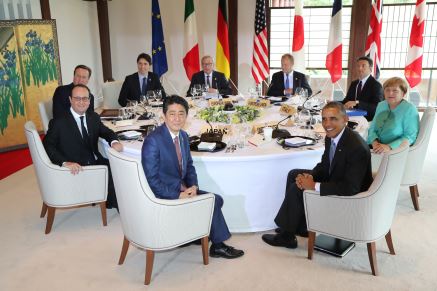Problem
前回はdlibをCUDAを有効にしたバイナリ、無効にしたバイナリを生成しました。
具体的に、CUDAを有効にしている状態で、どれだけ性能差が出るのかを比較したいと思います。
Preparation
まずは、実験に使う画像を用意します。
今回は下記を用意しました。
元画像: https://upload.wikimedia.org/wikipedia/commons/b/b7/G7_summit_at_Shimakan.jpg
4368x2912の大きなサイズです。
次に計測を行うソースです。
examples\face_detection_ex.cppという顔検出のサンプルがあります。
1 |
|
これに対して、上述の画像を認識させると
こうなります。
Try
このソースを下記のように改造します。
1 |
|
要するに、入力した画像ファイルを100回認識させ、その処理に要した合計時間と平均時間を算出するようにしただけです。
下記がその結果です。
| Left align | Total(ms) | Average(ms) |
|---|---|---|
| w/o CUDA | 1007778.0000 | 10077.7800 |
| w/ CUDA | 997522.0000 | 9975.2200 |
正直微妙です。約10%しか差がありません。


